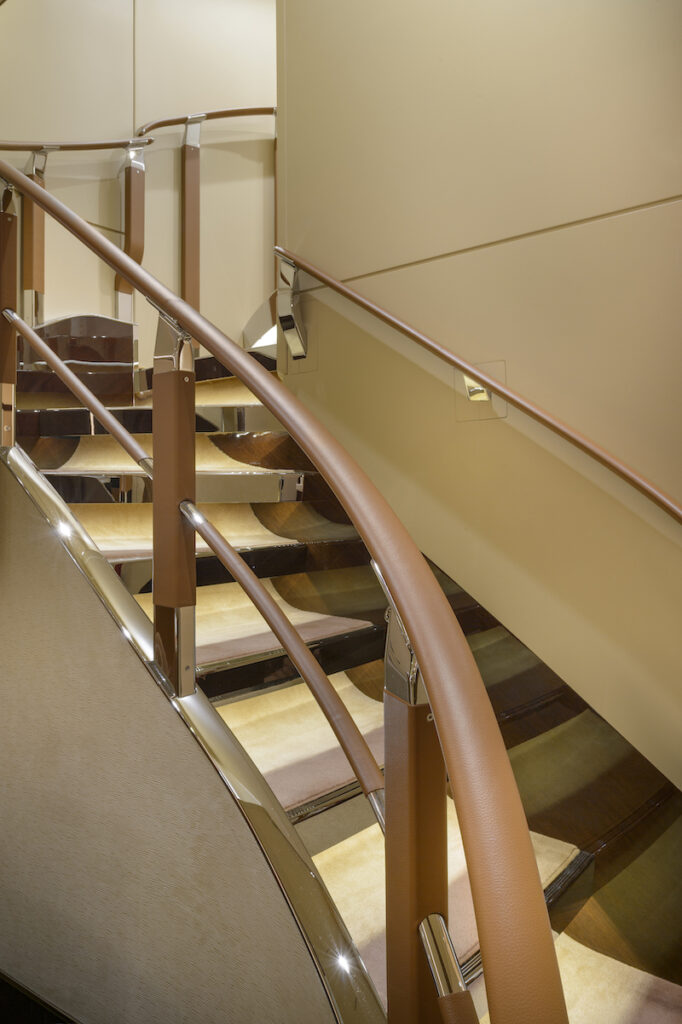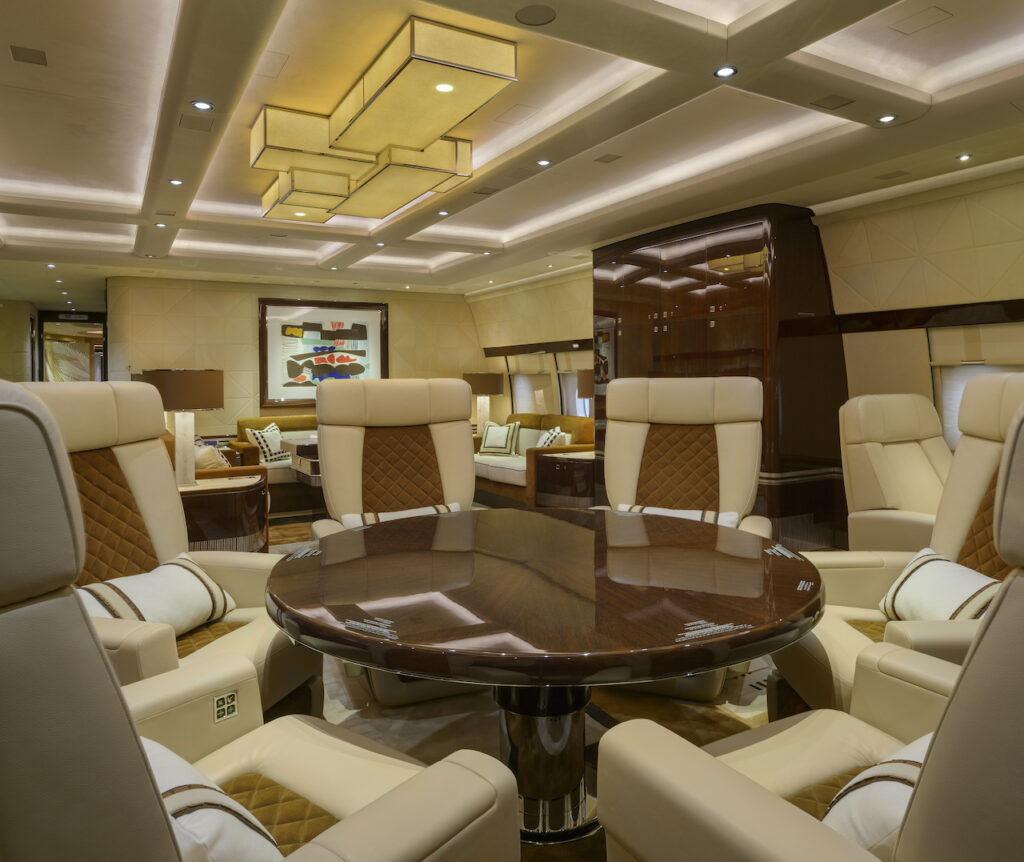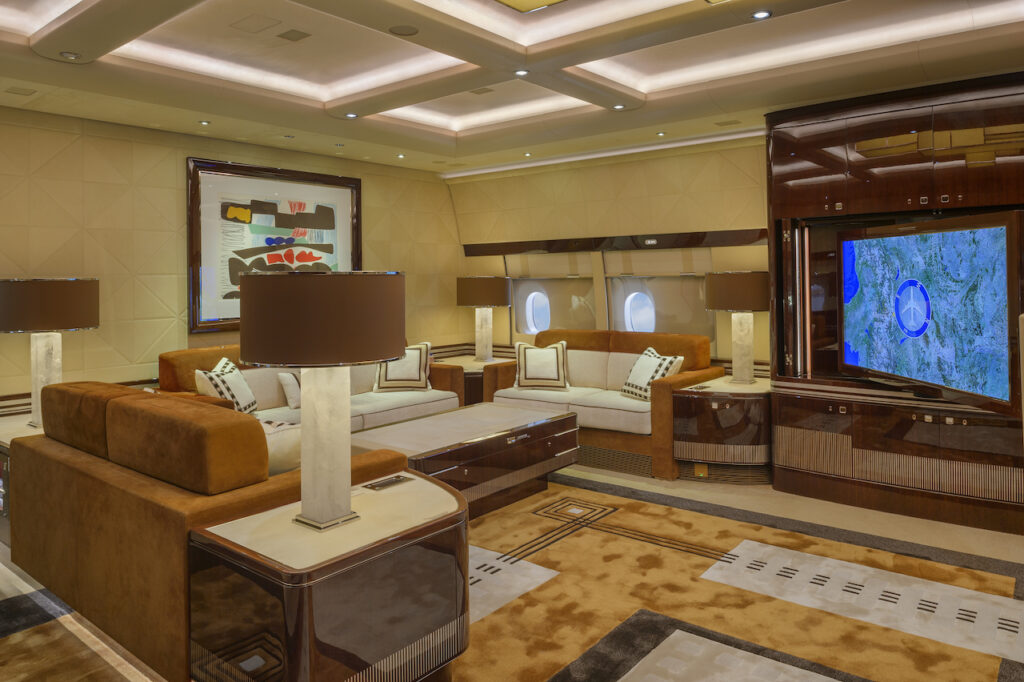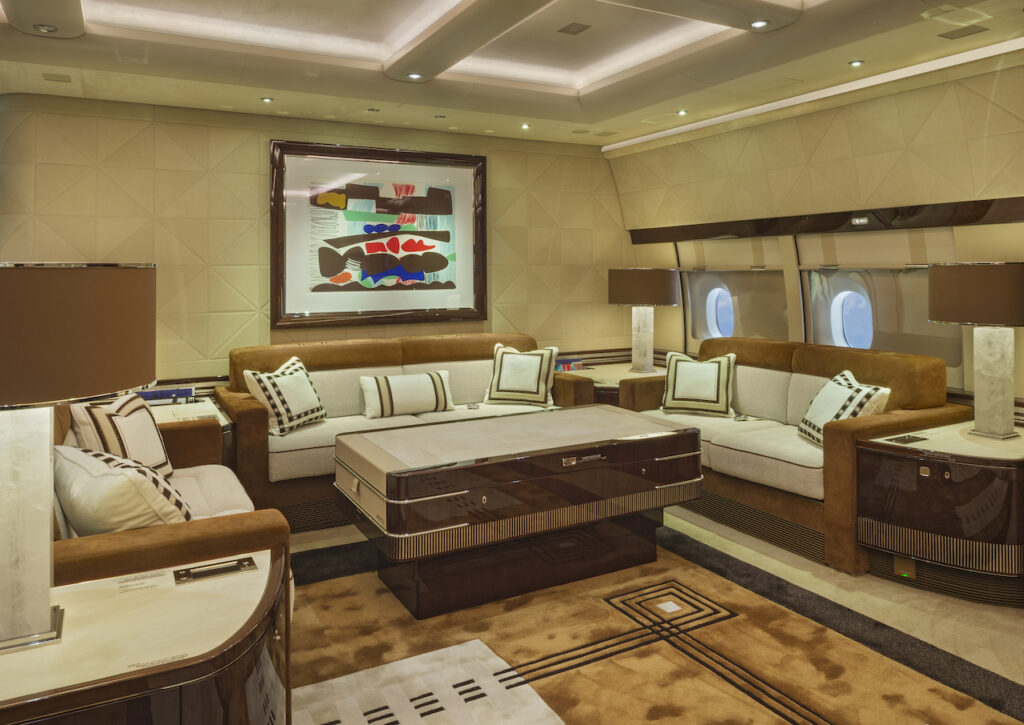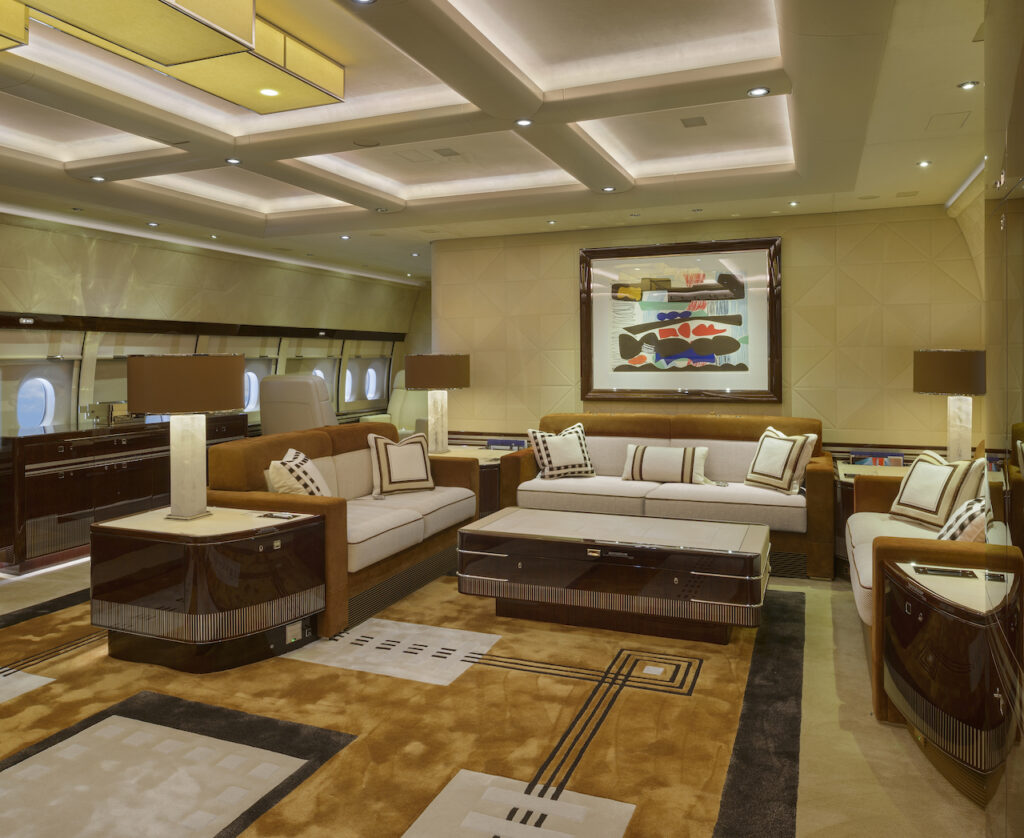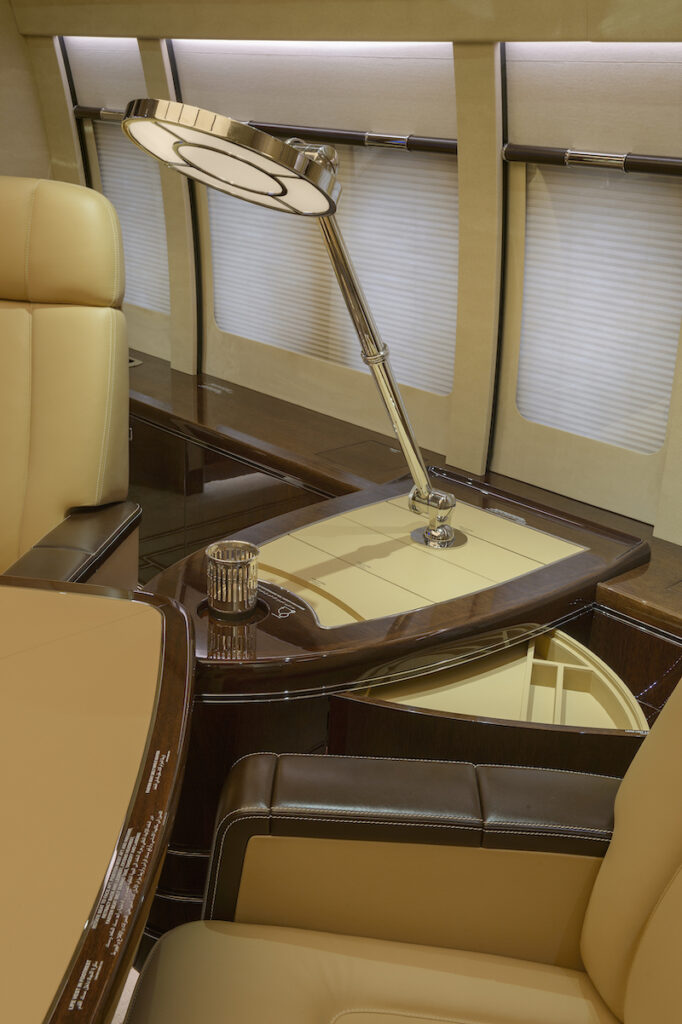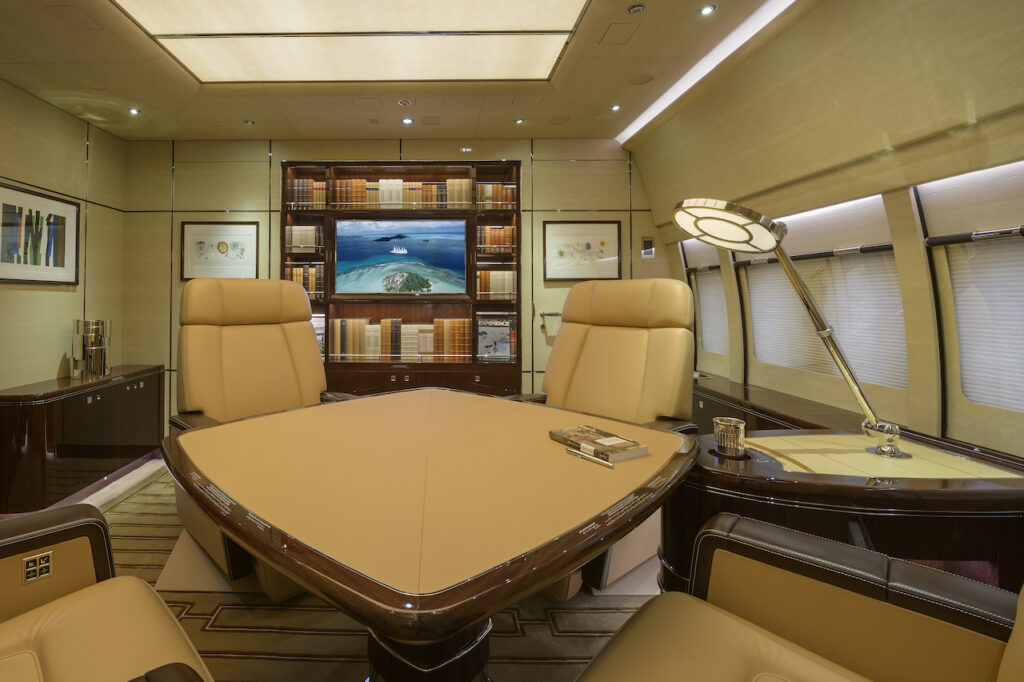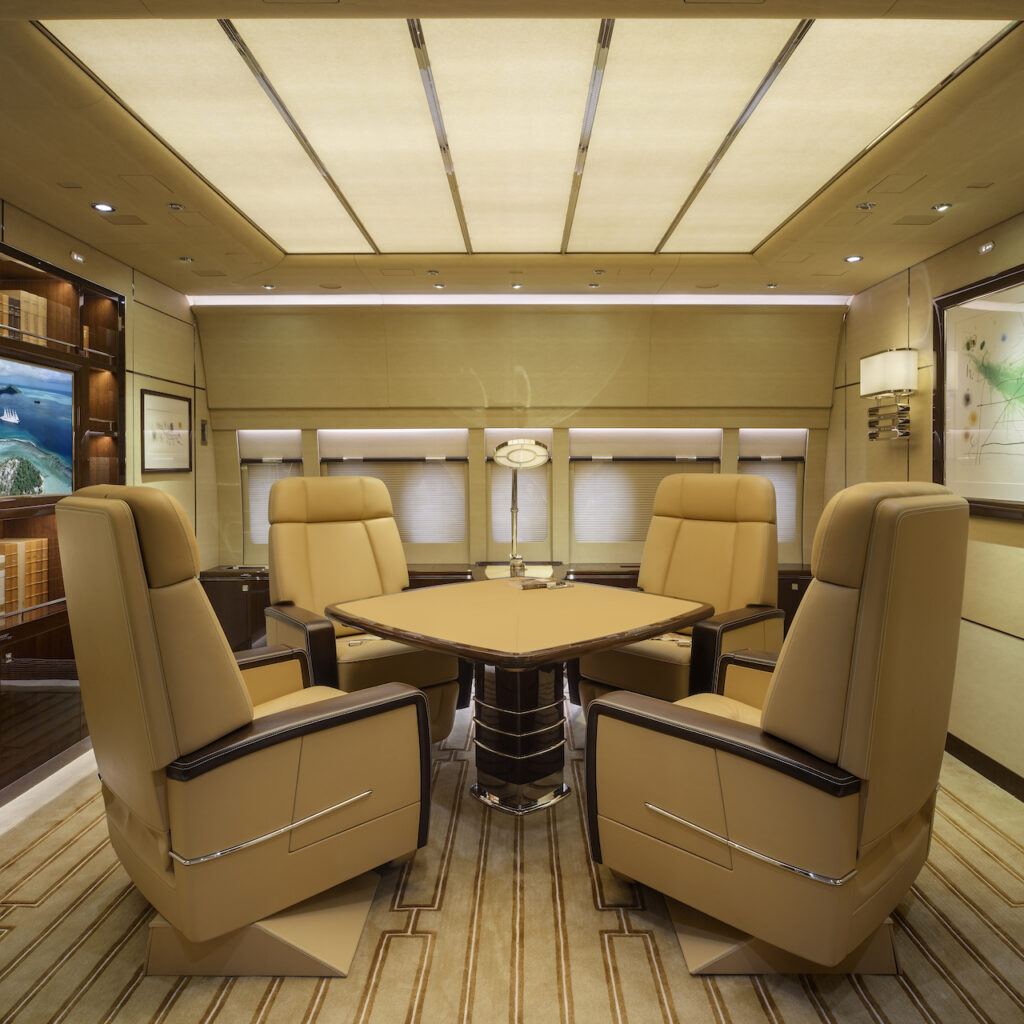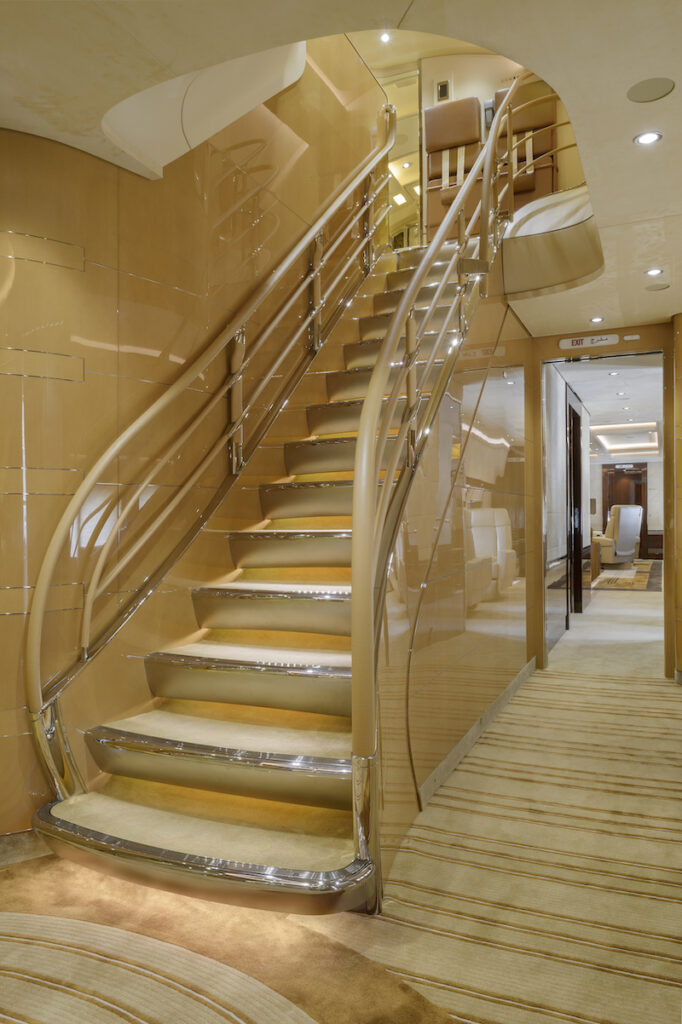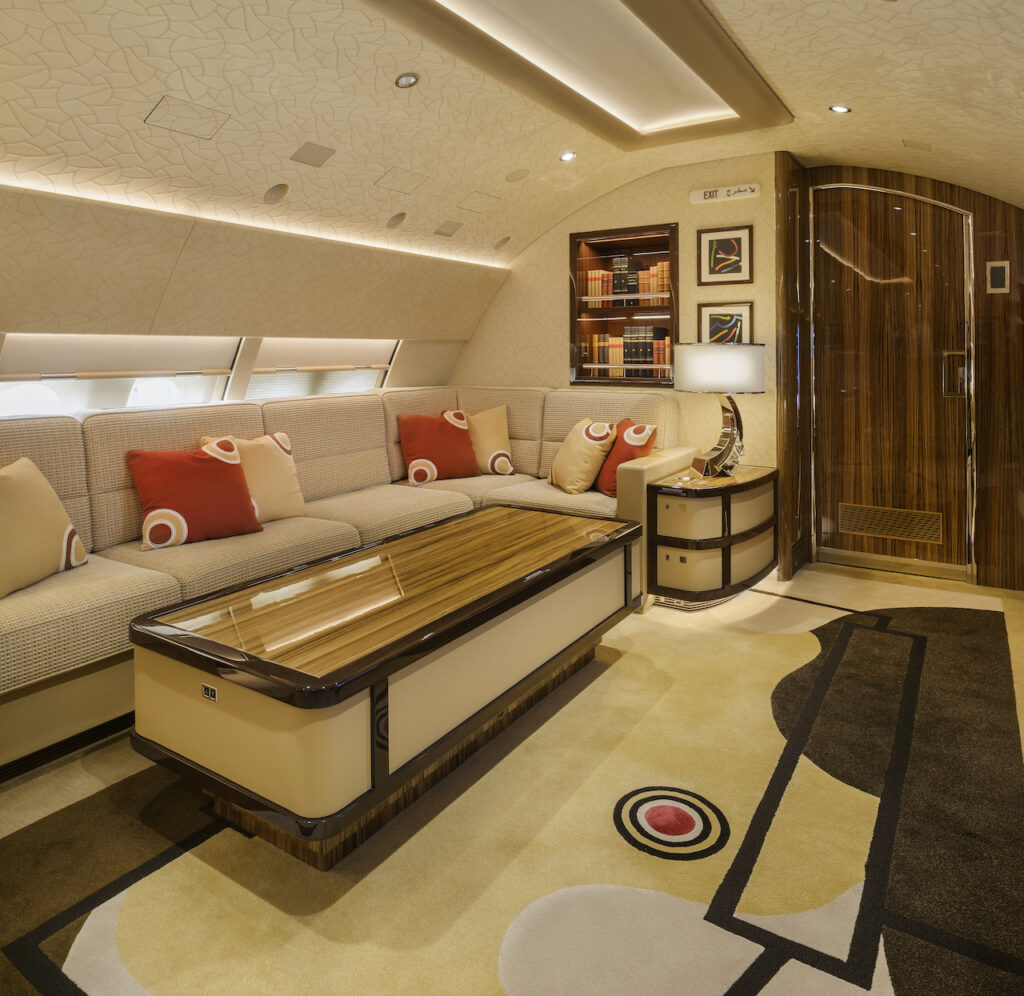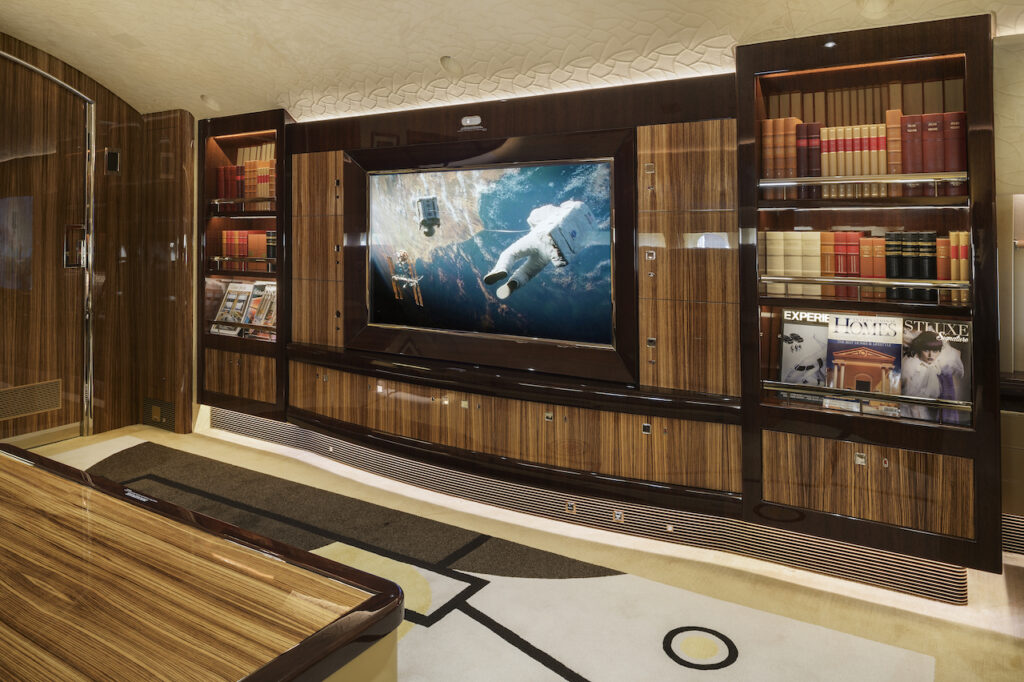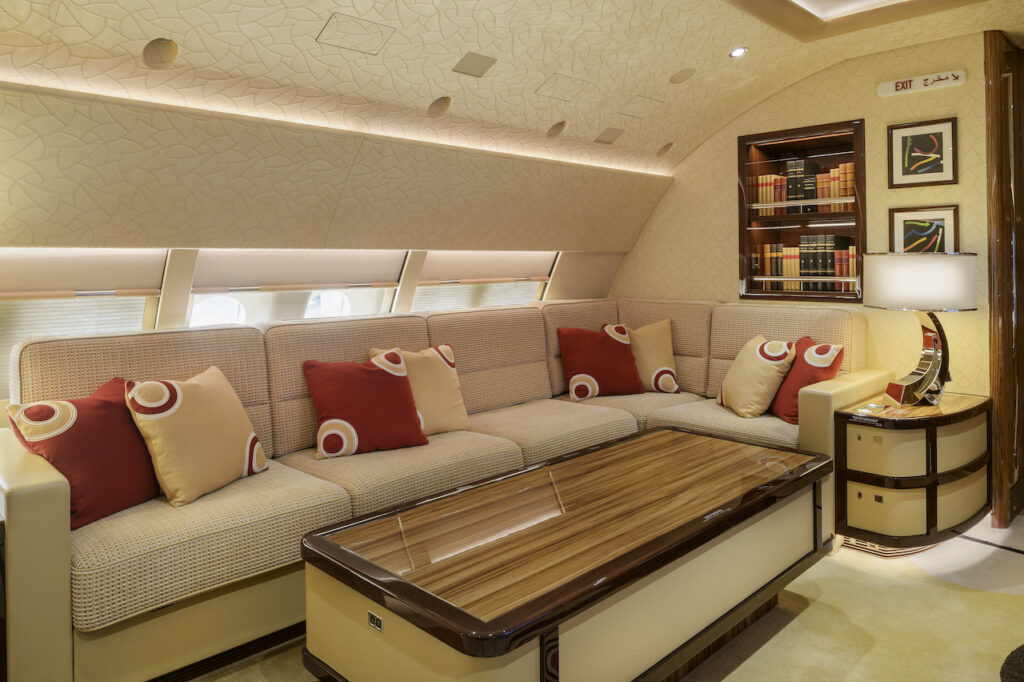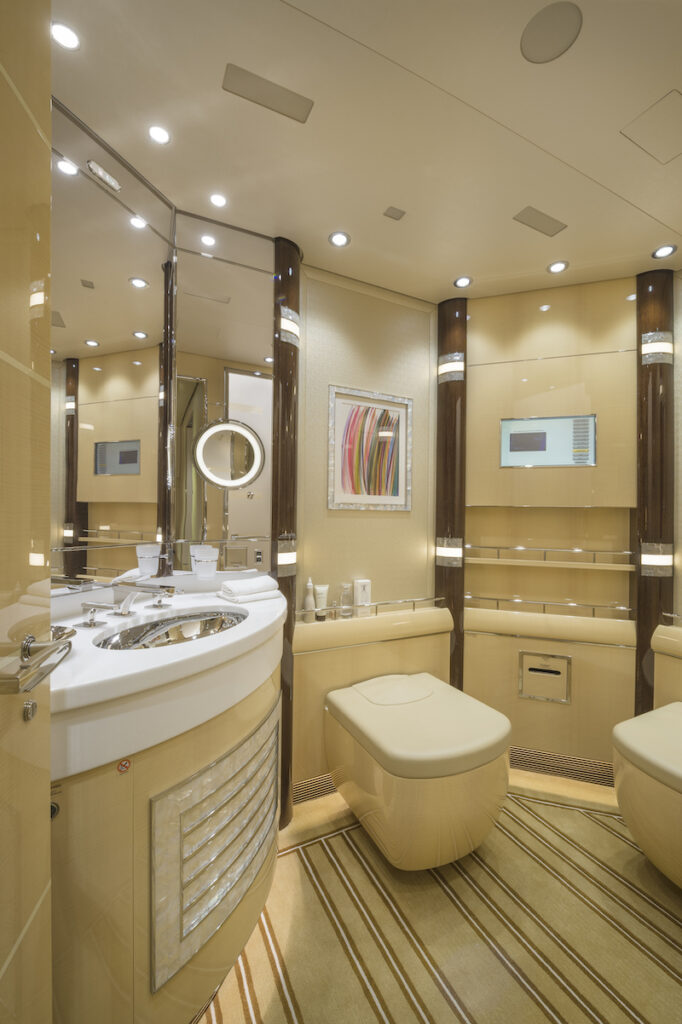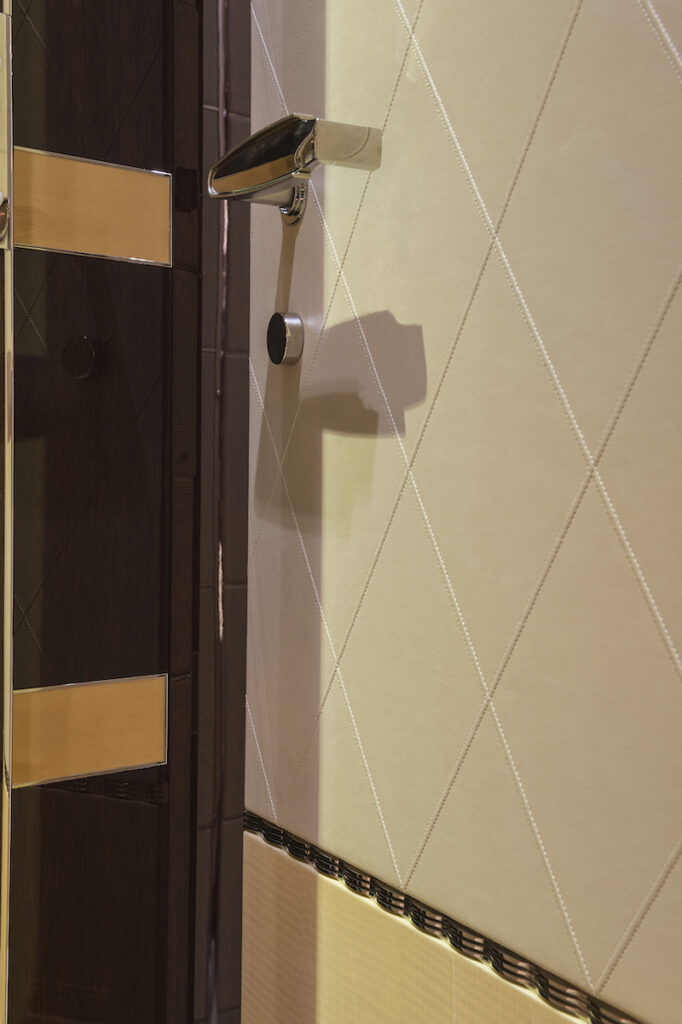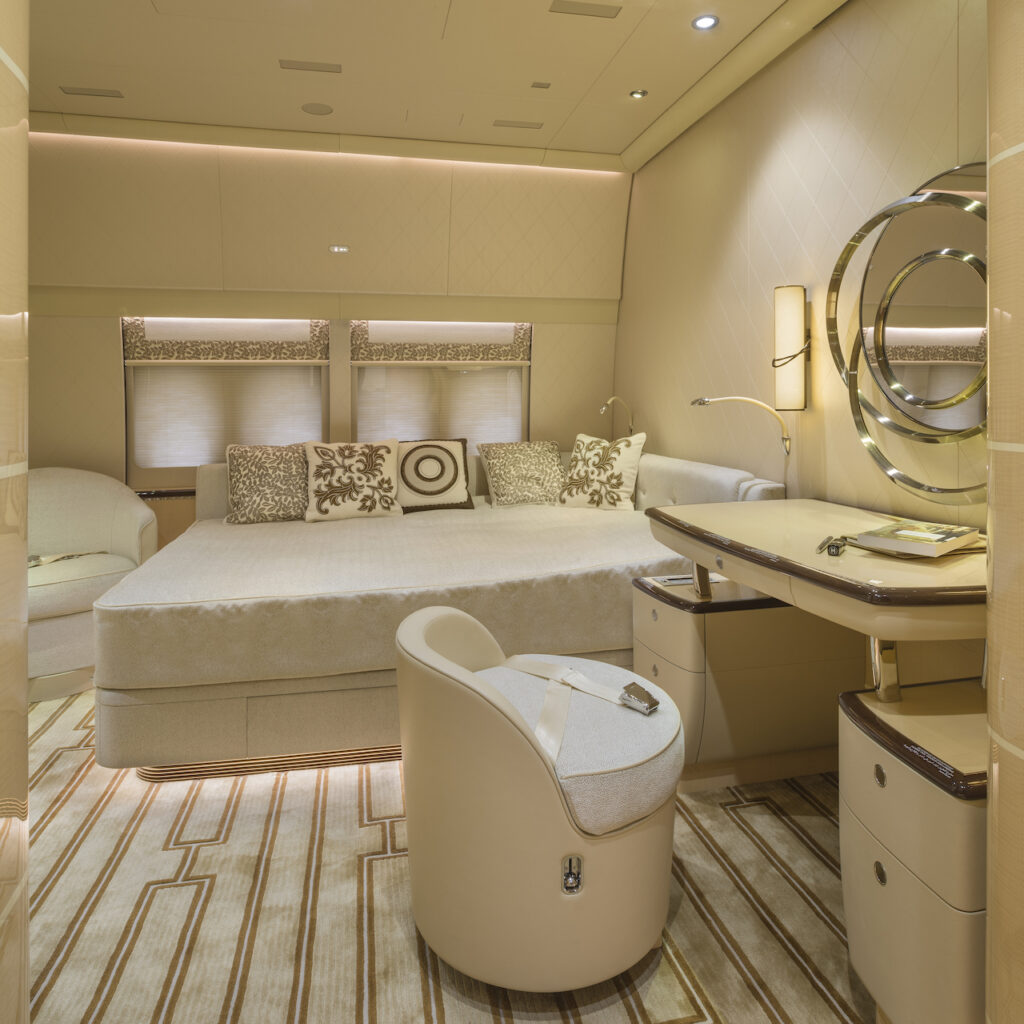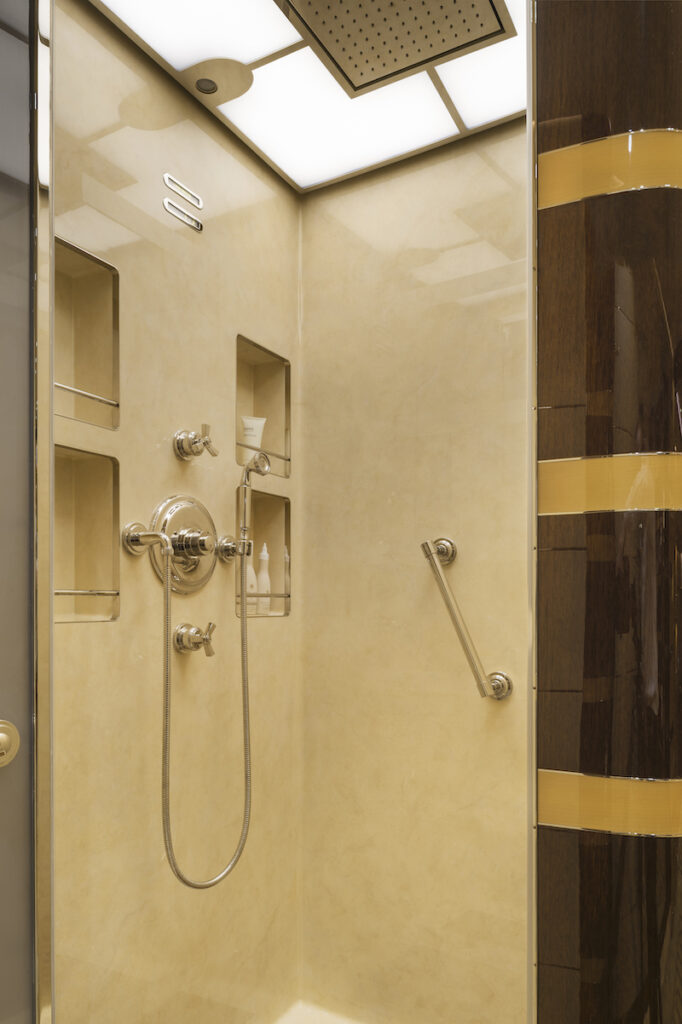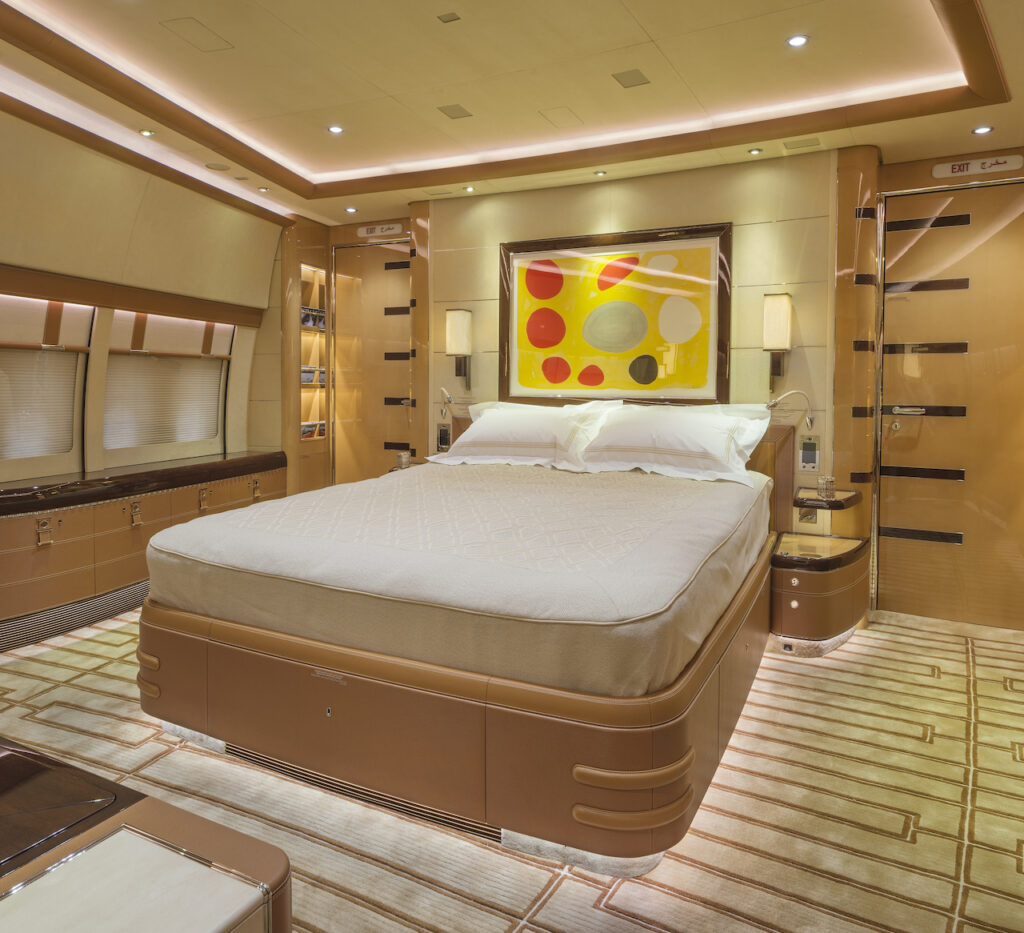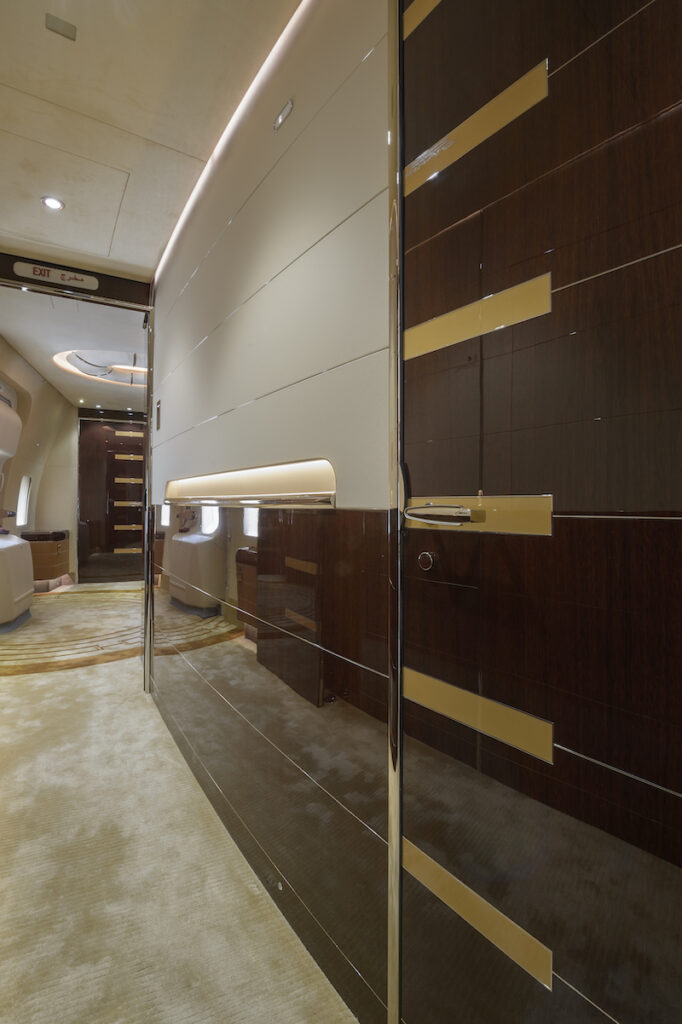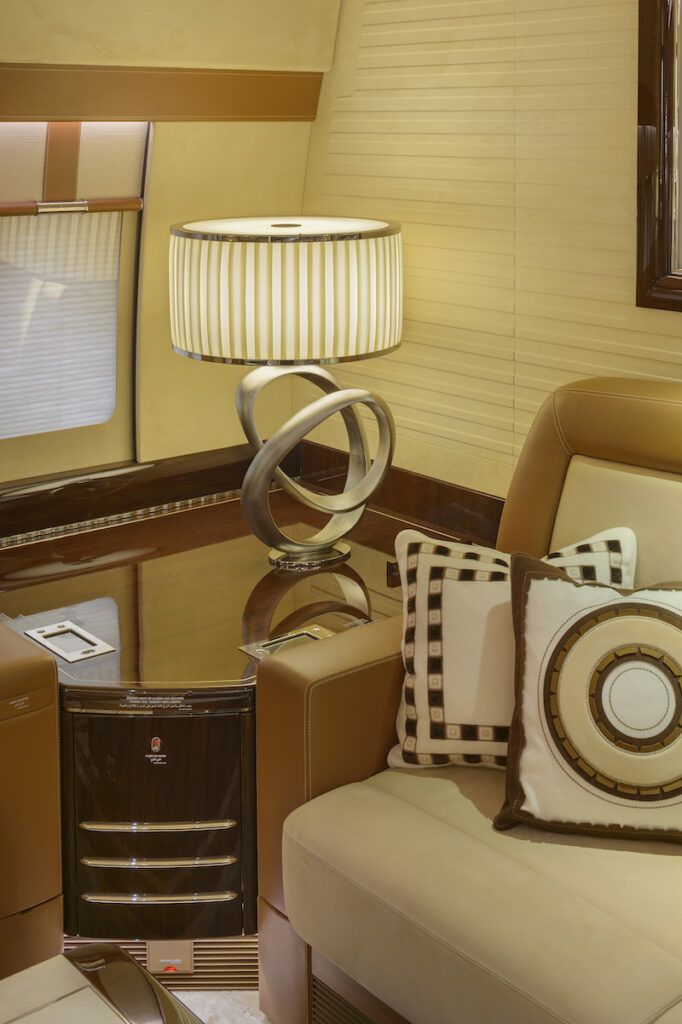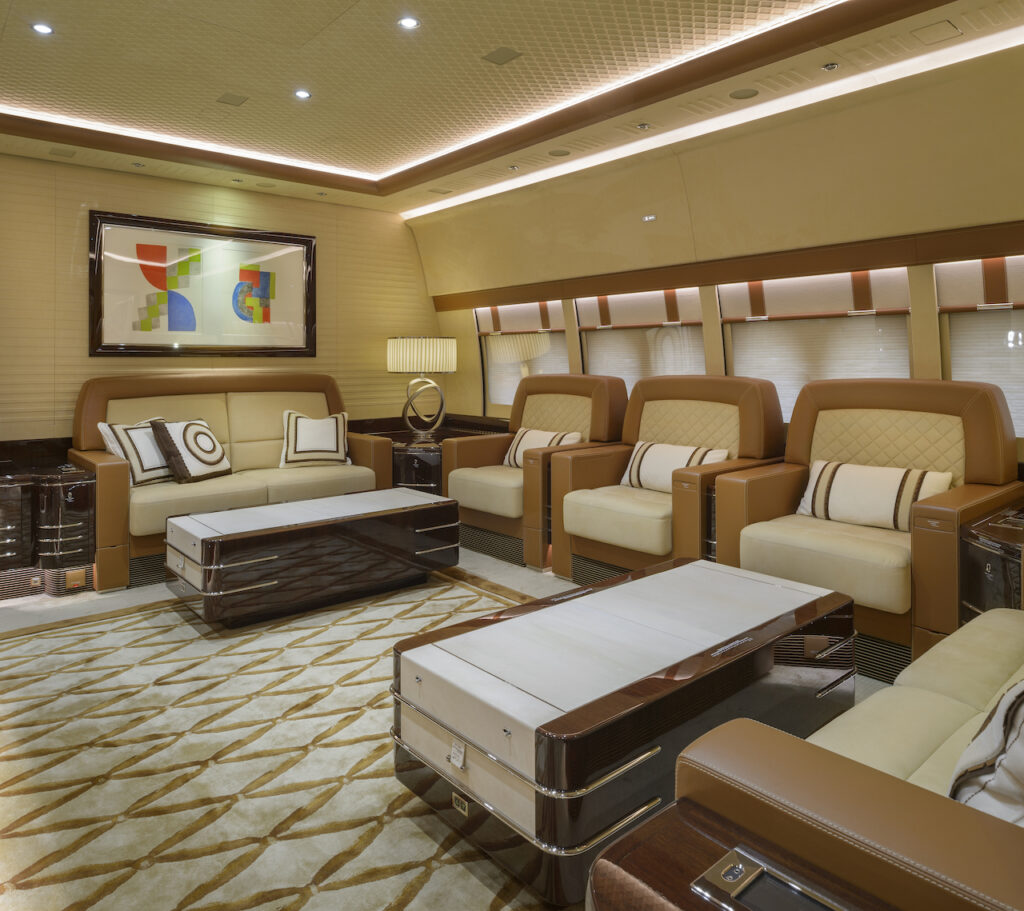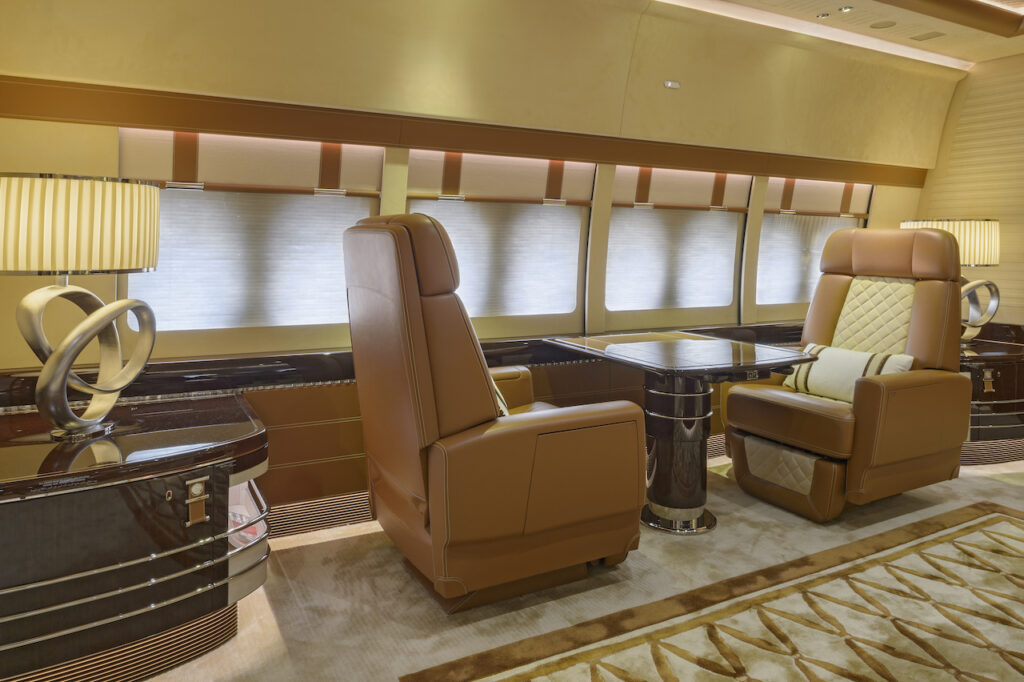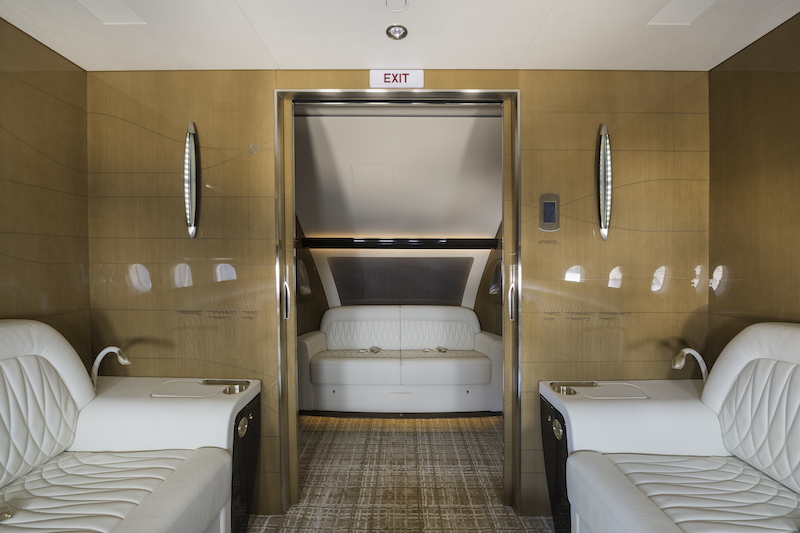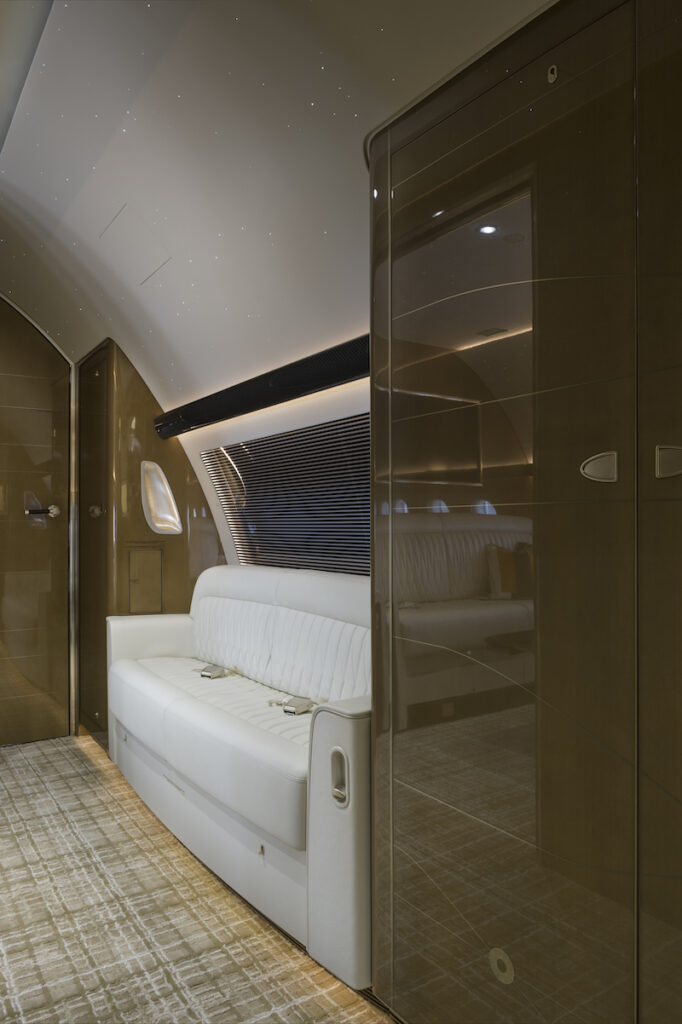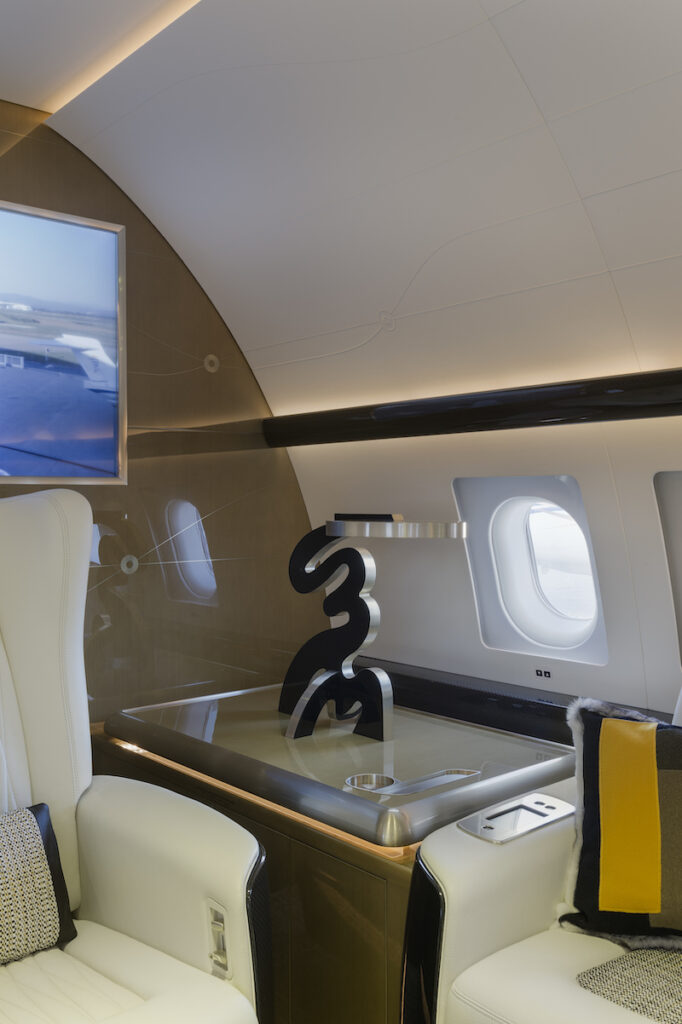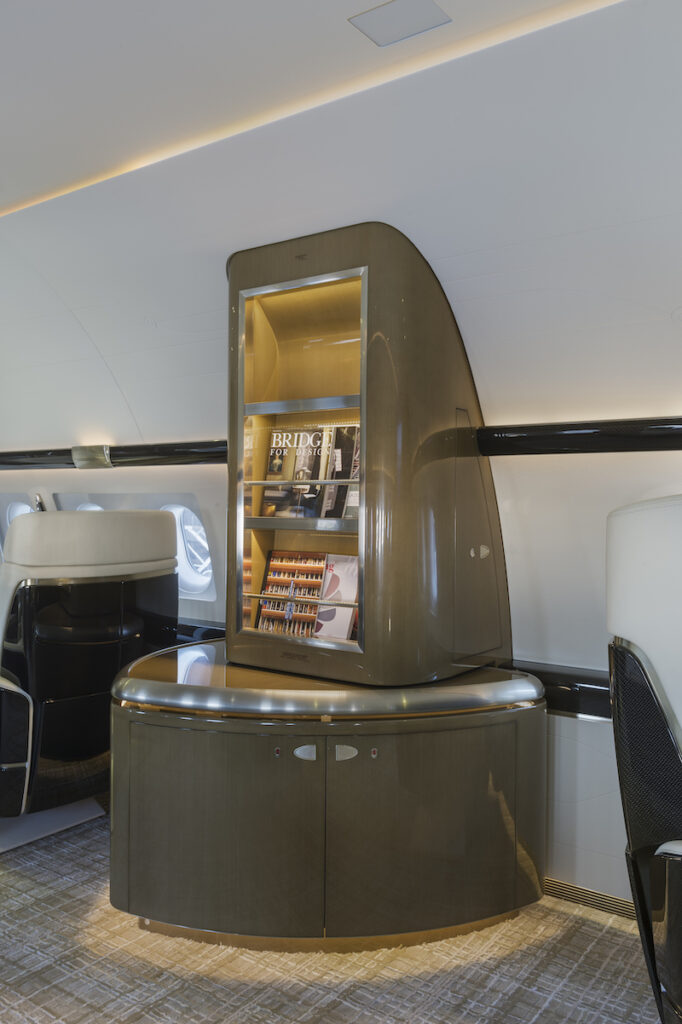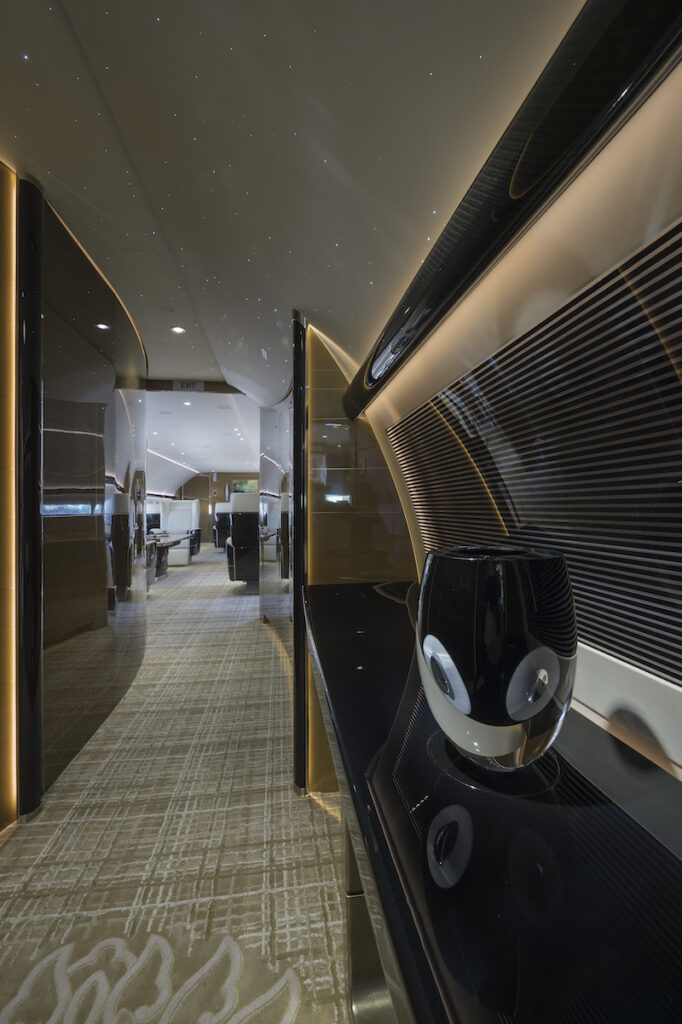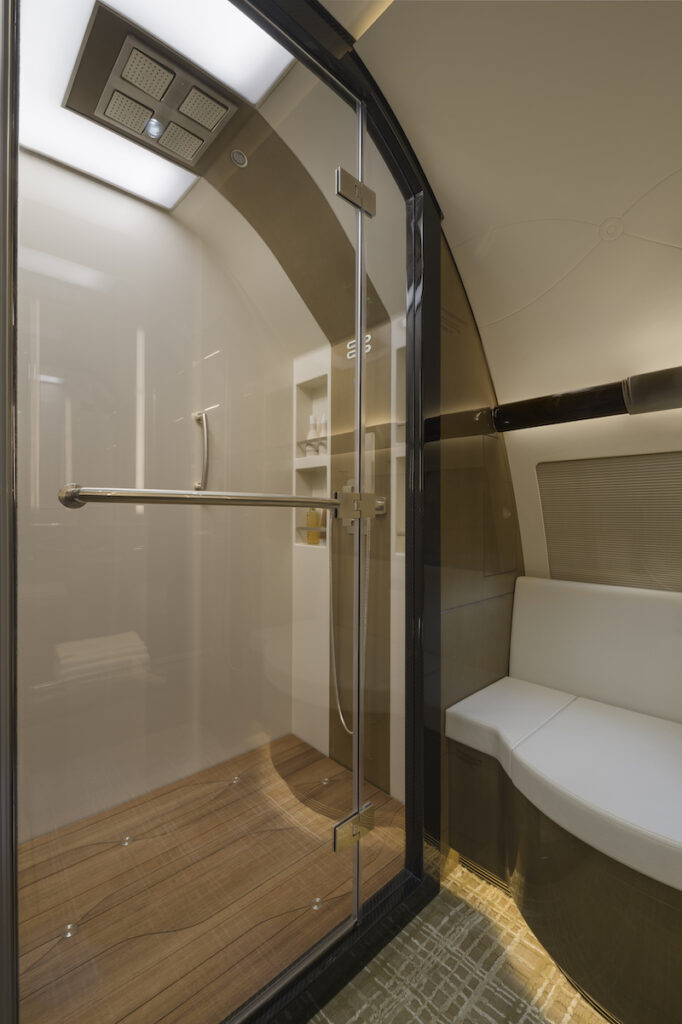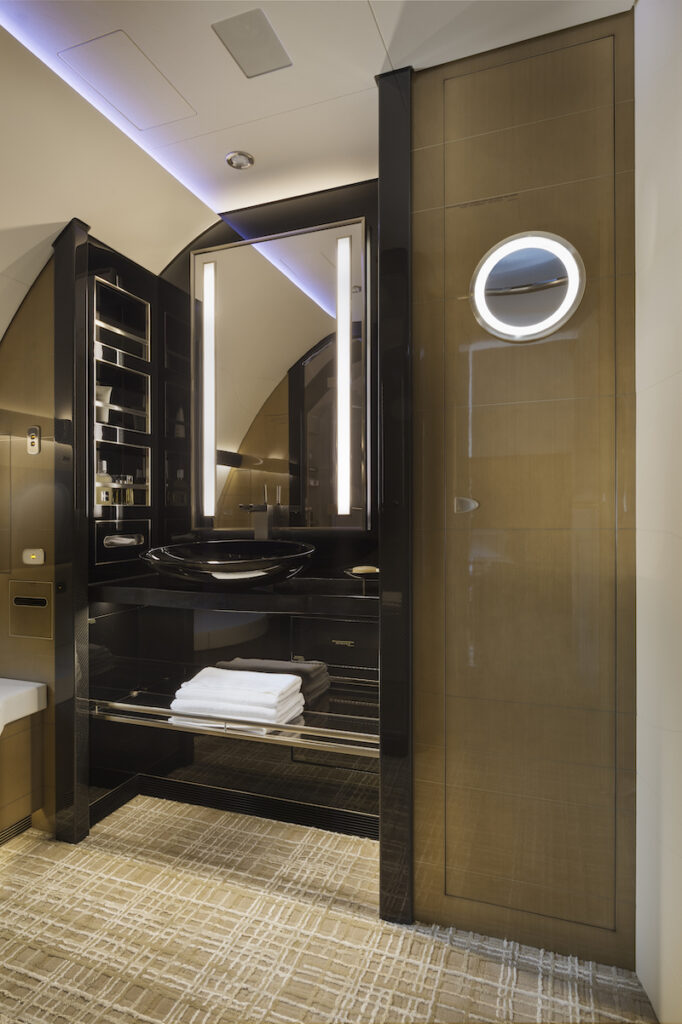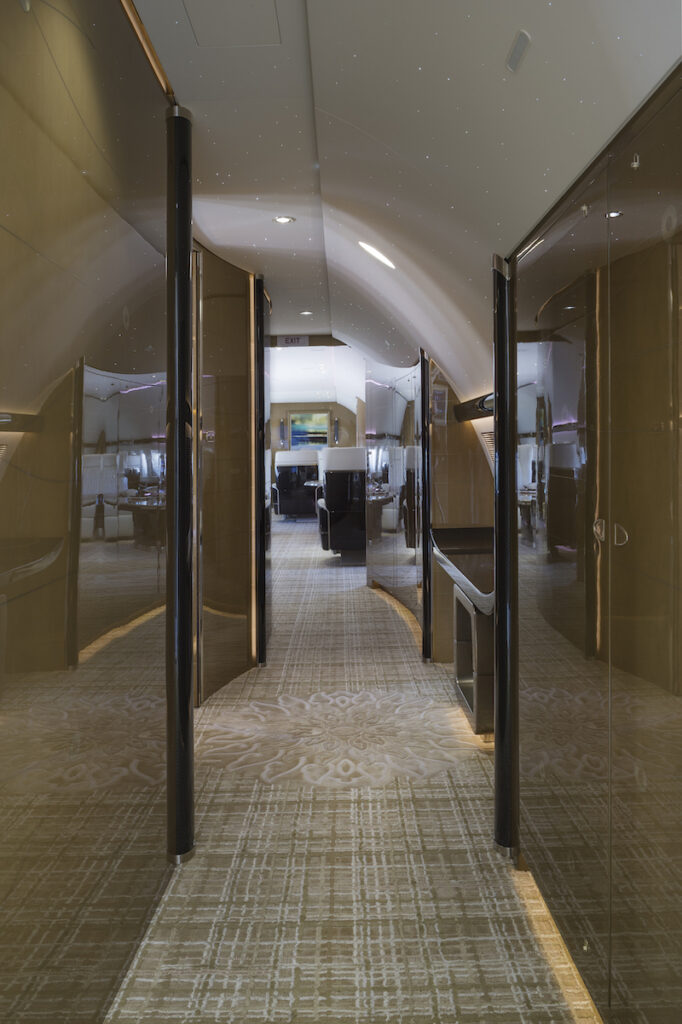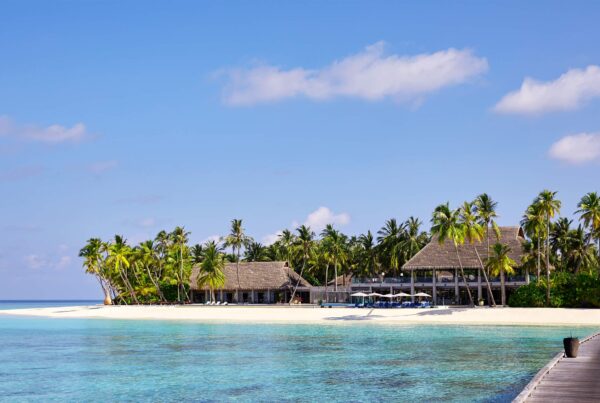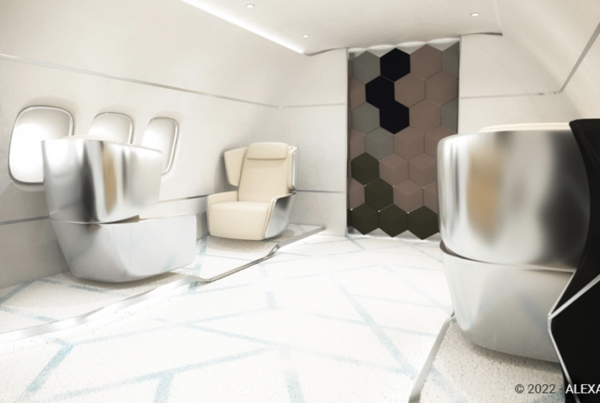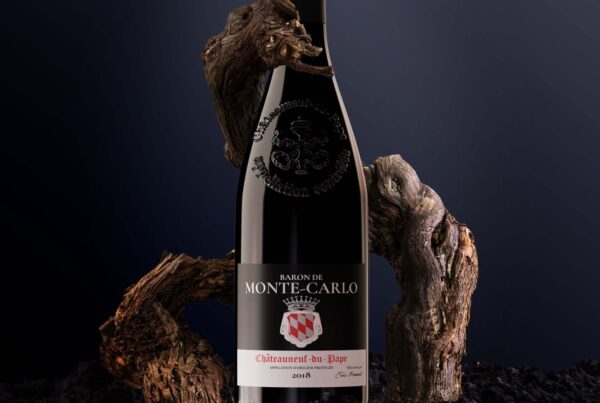A Glance behind the Process of Aircraft Design with Yves Pickardt
Dear Wall Street Luxury Europe members, we are continuing our aircraft interview series, following last month’s interview of Tom Chatfield, the CEO of Camber Aviation.
As a wealthy executive or celebrity, high net-worth individuals only often come across completed jets, entirely built and designed down to the smallest details.
However, as with many things in life, the process undertaken that justifies impeccable results is usually kept secret.
Today however, we have had the chance to interview Yves Pickardt, one of the most highly respected designers of private jet cabins in the world, recently awarded “Best of the Best 2021” in the Aircraft Interiors category by Robb Report NY. We discussed his creative process and extracted some well-kept secrets of what it takes to design some of the most luxurious aircraft in the world.
”I would love to design for a rock star… Or Elon Musk
Yves Pickardt
Helene Clabecq: How did your interest in aircrafts come to life?
Yves Pickardt: I basked in it from an early age. My father was a private pilot aside from his filmmaking career, and transmitted his passion to me. He had a biplane “Stampe” he’d do aerobatics with until he crashed, without injuries. Despite the accident, he kept the propeller at home as an art piece.
Later on, I used to visit the Aviation Museum in Paris and collect antique documents about the history of aircraft. Books, magazines, blueprints and all sorts or rare documents and original pictures about the beginning of aviation.
After graduating in philosophy, I went on to study design at l’École Nationale des Arts Appliqués et des Métiers d’Art in Paris.
HC: You started designing commercial projects on land before looking into aircraft design. What are some of the projects you have been involved in?
YP: I began my career in Rome, working with an interior design company on several luxury residential international projects: palaces, hotels, private mansions, yachts as well, before teaming up with Alberto Pinto in Paris, that I worked almost exclusively with until recently.
Among the most prestigious projects, I have been involved in as a project manager and later as a designer with Pinto, are La Mamounia hotel in Marrakesh, a moroccan residence for a Middle Eastern ambassador in Washington, the parisian home of a well-known prima ballerina, the interior of the M/S Paul Gauguin, based in Papeete, Tahiti, the two cruise ships for Club Med, various and huge corporate buildings…
Then, one of our customers asked us to design a Boeing Business Jet (BBJ1) in 1998. That led us to non-stop orders to design and refurbish aircraft for American and Chinese tycoons, to Greek billionaires, and the CEO of France’s first company for luxury goods, etc.
HC: What was one of your most exciting projects to date?
YP: I had the opportunity to work on a Boeing 747-8. It was a 420 square-meter flying family house. Very elegant and chic, not “fancy”. There exist less than six of these massive aircraft completed for private or Head of State owners worldwide. It belongs to aircraft history as it is not manufactured anymore. Truly, the end of an era.

Yves Pickardt
HC: How is a unique, one-off cabin designed and created to reflect the expectations and aesthetics that are so important to a new owner?
It is always a pleasure to complete new projects. The first step is to clearly understand what needs to be done, to which extent we have carte blanche, then define what was successful in the past, and select the suppliers. Firstly comes the floorplan. We select materials of the highest available quality, and once that is achieved, we review the design with the Completion Manager before handing everything over to the selected completion center to give us their strong inputs.
In most cases, customers do not want to be too fancy because they eventually want to resell the jet.
YP: However, I like to make a subtle nod to the owner. Once, a gentleman who loves exclusive sports cars asked us for seats in carbon fibre.
Another one wanted us to include a big yellow circle on top of his bed casting graphic lights, in reference to China’s symbol of luck, and matching the colour of his favourite leather jacket.
Clients come to us because they appreciate a modern and discreet style, with light touches and accents…
We do not do production work. The level of detail we provide, the very unique concepts, the respect of customers and our obsession and passion for this craft are also explained by the price per square-foot onboard. We explore and design every cubic inch on the aircraft. No corner is left behind!
Pinto luckily, never had to refuse a project we’d consider too kitsch, exaggerated, or outrageously luxurious. People who want to build golden thrones and diamond lamps in their jets naturally align with other types of designers. To me, real luxury lies in a perfect floorplan, an original and accurate design, and the selection of the best materials.
HC: What goes beyond design in your relationship with customers?
YP: Our job is, indeed, not only to design. There is a psychological aspect in the relationship with the client front-end that is key, and what I do would be nothing without the help of a professional Completion Manager, such as Tom Chatfield and his team.
We invest time getting to know them, having them articulate who they are and what they are seeking. We speak as much as we draw. We show what could be and why that would be better.
They rely a lot on the designer for taste. But we also have to surprise them. We are not paid to do exactly what they have in mind. As an expert, it is crucial to direct and guide.
HC: What is the process of designing a green (N.B. brand new) airplane like, step by step, and what are some things to keep in mind that are unique to this challenge?
YP: The first step is always the layout. We can suggest up to 10 or more variations depending on how many people will generally be on board, how long the flights will be, etc. Once the floorplan is frozen, we make sketches. Sample schemes, colour schemes, define the milestone planning. It takes 6 to 8 weeks to release the first images in 3D rendering.
Next step, we create a design book of 100/150 pages that describes in detail all the pieces of furniture, tables, cabinets, handles, vanities… and most importantly the seats. Bespoke carpets, fabrics are generally weaved especially for our projects, so are wood patterns. Our designs never come out of a catalogue except for maybe spotlights, touch screen controls or TV monitors. One important detail to note is that 90% of the cabin components are attached. Hence why each item is chosen carefully. The collection of loose items is composed of sheets, decorative cushions, flatware, crystalware and such.
When a corporate aircraft is also used privately, nothing should remind of work. Brand owners may select brands they own; but no ostentatious logos. In a nutshell, we create soothing and balanced designs that aren’t “in your face”. Fancy enough for customers, reasonable and comfortable to fly. And easy to sell. And put simply, we can do anything they want, once they have the money to pay for it. I haven’t worked with a rock star yet, but I know the Rolling Stones had built a fireplace with a fake fire in their jet… One could even technically get a steam room, a movie theatre… A princess once asked for a glass ceiling to see the sky, but that is obviously and unfortunately not feasible But all in all, as a private jet owner, you must keep in mind that you are generally not flying longer than 12 hours in a row. In those hours you may sleep, rest, eat, have time to watch one or two movies and go straight to your home or hotel.
HC: As sustainability and conquest of space are in the headlines, along with more recently flying cars, where do you see the future of aircraft?
YP: Innovation in the industry takes time, but I can see that in less than 20 years, we will be flying with clean fuel. There is lots of research being done on the different ways to be sustainable. It is a hot topic.… There is ongoing progress regarding recyclability, weight, new fabrics…
We have to consider the topic, and we receive strong inputs from the completion centres.
With regards to space, I would love to design a spaceship someday. Elon Musk, if you read these lines ;).

Interview by Hélène Clabecq
About Yves Pickardt
Yves Pickardt was born in Monaco to German parents, who had settled in Paris. With a father who was a filmmaker and aviator, a mother who was an actress, an aunt who was a dancer in America and a great-uncle who was a famous painter in pre-war Berlin, he had a wonderful start to embark on an artistic career with a strong taste for aviation. This he did, after studying interior architecture and design in Paris, from which he graduated from the École Ecole Nationale Supérieure des Arts Appliqués et des Métiers d’Art. The multiculturalism of his origins and training was affirmed when his career began in Italy, the country of the arts par excellence, whose birth in the nearby Principality of Monaco had revealed to him very early its immense creative wealth. After ten years spent in Rome with the great Italian decorator Anna-Laura Angeletti, he returned to Paris to begin a collaboration with the late, world-famous decorator Alberto Pinto that has lasted 33 years.
With these two stars of international decoration, he worked for more than forty years for the most prestigious and demanding clients around the world. He has designed cruise ships, yachts, hotels, luxury apartments and homes. He created the Alberto Pinto Aviation Interiors department 23 years ago and, since then, the aviation order book has never been empty.
From Gulfstream, Bombardier Global and Dassault Falcon business jets, to Airbus ACJ319 and 320Neo and on to Boeing 737 and 747 BBJ aircraft, Yves Pickardt has designed more than 30 interiors, some of which have won awards, such as the Airbus A320 NEO, recently recognized as “Best of the Best 2021” by the prestigious Robb Report magazine in New York.
Yves PICKARDT is now an independent professional with an internationally recognized expertise.





